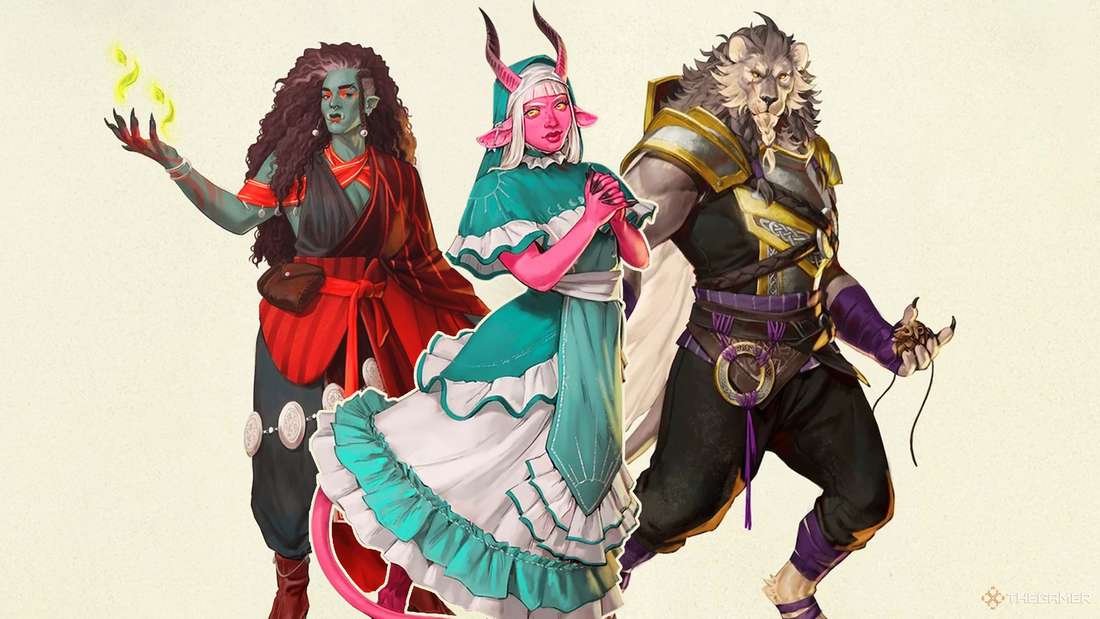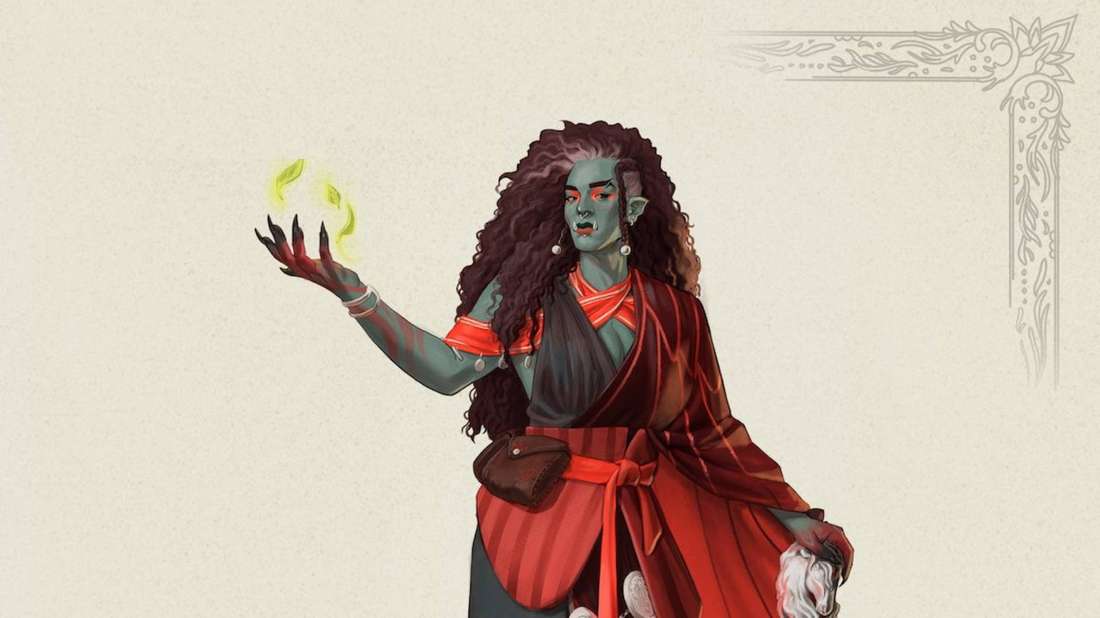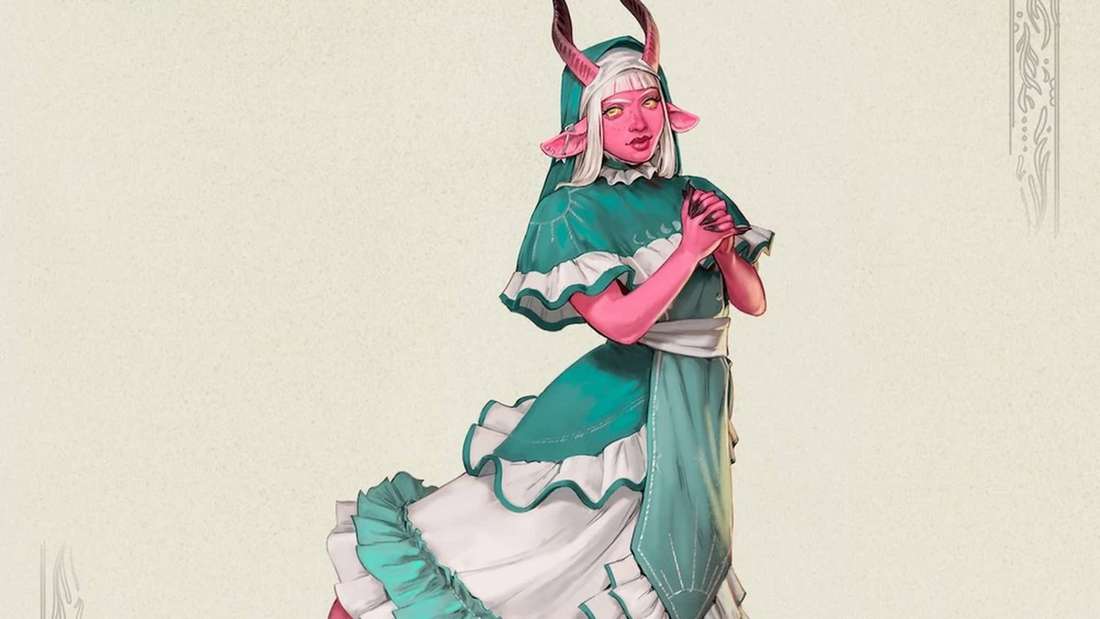Critical Role Campaign 4 Newcomer Whitney Moore Details Hilarious “Race to the Bottom” with Co-Star Sam Riegel’s Character: “I Made the Mistake of Thinking I Could Out-Troll Him”
Popular Now
 Stumble Guys
Stumble Guys
 Candy Crush Saga
Candy Crush Saga
 Free Fire Max
Free Fire Max
 Poppy Playtime
Poppy Playtime
 PUBG Mobile
PUBG Mobile
 Valorant
Valorant
 Minecraft
Minecraft
 Warframe
Warframe
 Call of Duty
Call of Duty
 NBA 2K24
NBA 2K24
 The highly-anticipated launch of Critical Role Campaign 4 has ushered in a new era for the behemoth of actual play, featuring a massive ensemble cast, a new Dungeon Master in the renowned Brennan Lee Mulligan, and a fresh world: Aramán, where the gods are dead. Among the new faces joining the main cast is actress and voice-over artist Whitney Moore, whose character, the demon Tyranny, has quickly formed an unforgettable—and apparently chaotic—dynamic with veteran cast member Sam Riegel’s character, Wicander Halovar. Moore recently shed light on this comedic pairing, revealing a lighthearted but intense struggle for the moral low ground that has become a major source of high CPC keywords engagement for viewers.
The highly-anticipated launch of Critical Role Campaign 4 has ushered in a new era for the behemoth of actual play, featuring a massive ensemble cast, a new Dungeon Master in the renowned Brennan Lee Mulligan, and a fresh world: Aramán, where the gods are dead. Among the new faces joining the main cast is actress and voice-over artist Whitney Moore, whose character, the demon Tyranny, has quickly formed an unforgettable—and apparently chaotic—dynamic with veteran cast member Sam Riegel’s character, Wicander Halovar. Moore recently shed light on this comedic pairing, revealing a lighthearted but intense struggle for the moral low ground that has become a major source of high CPC keywords engagement for viewers.
In a recent interview, Moore detailed the immediate rapport, and subsequent on-screen rivalry, she’s established with Riegel, a performer famously known for his penchant for player-induced chaos and boundary-pushing roleplay. The situation, Moore suggests, is less about a heroic quest and more about a duel of dubious deeds.
 The Duo of Dubious Deeds: Tyranny and Wicander’s Dynamic
The Duo of Dubious Deeds: Tyranny and Wicander’s Dynamic
Moore, whose character Tyranny is a newly converted religious aspirant and recent arrival to the plane, explained that her early approach to the collaboration with Riegel’s Wicander has led to an escalating, and perhaps unsustainable, level of mischief. The exclusive news highlights a behind-the-scenes understanding that mirrors the characters’ in-game relationship.
“Sam Riegel and I are a duo,” Moore confirmed. “And I made the mistake of thinking that I could out-troll him, so now we’re in a race to the bottom to see who can be the voice of reason first.”
This “race to the bottom” is a delightful prospect for TTRPG enthusiasts and D&D fans who value the unscripted hilarity of actual-play shows. The implication is that the two performers are actively, yet good-naturedly, competing to see whose character can be the most unhinged or morally compromised before one of them is forced to adopt a more sensible or, dare we say, ‘good’ path. This narrative framework offers substantial long-term viewer engagement potential.
Wicander’s Influence: A Model for Chaos
Moore further clarified the in-world mechanism driving this character dynamic. Tyranny views Wicander as a “model for her,” which unfortunately means that his already eccentric and unpredictable behavior is “rubbing off on her a bit.” This narrative choice provides a perfect explanation for their joint spiral into tabletop anarchy, a common trope that often leads to the most memorable Critical Role moments.
This partnership is a cornerstone of the new campaign’s unique structure. Campaign 4, overseen by new Dungeon Master Brennan Lee Mulligan, employs a modified West Marches format with a sprawling 13-person cast initially divided into three distinct groups: the Soldiers, the Seekers, and the Schemers. This multi-group setup allows for a more realistic and sprawling narrative, akin to a fantasy epic with multiple concurrent storylines, which is generating significant premium content buzz and driving high-value advertising placements.
 High-Stakes Roleplay in Aramán: Beyond the Trolling
High-Stakes Roleplay in Aramán: Beyond the Trolling
While the comedic interplay between Moore and Riegel is a highlight, the overarching narrative of Campaign 4, set in Aramán, remains intensely serious. The world is grappling with the consequences of a mortal revolution that resulted in the execution of the world’s gods. The campaign opens with the immediate fallout of the execution of the beloved war hero Thjazi Fang for sedition—a high-stakes political thriller that provides a dramatic counterpoint to the in-game comedy.
The cast’s ability to pivot between moments of deep, emotional roleplay and outright absurdist comedy is a hallmark of the Critical Role brand, and the Moore-Riegel partnership exemplifies this balance. The “race to the bottom” serves as necessary comedic relief against the grim backdrop of a post-deity world dealing with themes of economic inequality and systemic tyranny, which Mulligan has already confirmed are the true “big bads” of the campaign.
The success of Campaign 4 hinges on the immediate chemistry of these new pairings and the capacity of the enormous cast to work within the innovative, rotating-table structure. Early episodes have demonstrated strong fundamentals in this regard, with the veterans seamlessly integrating the newcomers.
What This Means for Campaign 4’s Future
The humorous tension between Tyranny and Wicander is more than just a running gag; it is a vital indicator of the campaign’s health and its capacity to deliver both serious drama and side-splitting comedy. Fans are heavily invested in seeing which performer will “crack” first and be forced to play the straight character. This ongoing contest, driven by organic character development and player commitment, is a potent generator of weekly trending gaming content.
The expansive cast and the split-party format present inherent challenges for any actual-play production, demanding a high level of collaborative storytelling. The playful antagonism between Moore and Riegel ensures that even in the midst of a politically charged investigation into regicide and divine collapse, there remains an immediate and accessible source of entertainment for all viewers, old and new. This blend of high-quality production and engaging character arcs continues to solidify Critical Role’s position as the gold standard in modern tabletop entertainment.
The full scope of the narrative—which promises years of content—will eventually reveal the true fate of the newly formed party divisions. Until then, fans can eagerly tune in each week to witness the continuing, and highly entertaining, competition between Whitney Moore and Sam Riegel to see who can make the most ridiculously poor life choices. The only certainty is that the viewers will be the ultimate winners in this premium D&D content battle for the bottom.
Key Takeaways for Critical Role Campaign 4
- Newcomer Dynamic: Whitney Moore (Tyranny) is engaged in a playful “race to the bottom” with veteran Sam Riegel (Wicander).
- The Core Conflict: The competition is to see which character will be the first to adopt a “voice of reason.”
- Character Rationale: Tyranny views Wicander as a role model, whose eccentric behavior is influencing her.
- Campaign Structure: C4 utilizes a modified West Marches style with a massive cast, divided into the Soldiers, Seekers, and Schemers.
- Overarching Themes: The campaign, DMed by Brennan Lee Mulligan, explores serious themes in the world of Aramán, where the gods are dead and the big bad is confirmed to be ‘capitalism’ or systemic oppression.
Premium Gaming News & Critical Role Updates
For more in-depth analyses of the new campaign, character builds, and high-revenue game streaming trends, keep following our weekly critical gaming reviews. The sheer size and innovative structure of Campaign 4 guarantee a continuous flow of SEO-optimized content and compelling developments for the foreseeable future. Don’t miss the next session for the latest in this evolving D&D actual play phenomenon.









